The capture below illustrates the effects on the pressures, in the intake and exhaust systems.
This vehicle was suffereing a misfire condition on cylinder No.2
The ignition coil and spark plug had been replaced and the compression checked, before I became involved.
I then verified the injectors as good and moved on to running pressure checks, using my Pico WPS500 pressure transducer.
The results below illustrate how a problem with the exhaust valve opening was the cause of the problem.
This waveform capture, together with the in-cylinder pressure waveform below, show the mechanical failure.
The cam cover was removed and the cam lobes were confirmed to be worn and the rockers had dislodged.

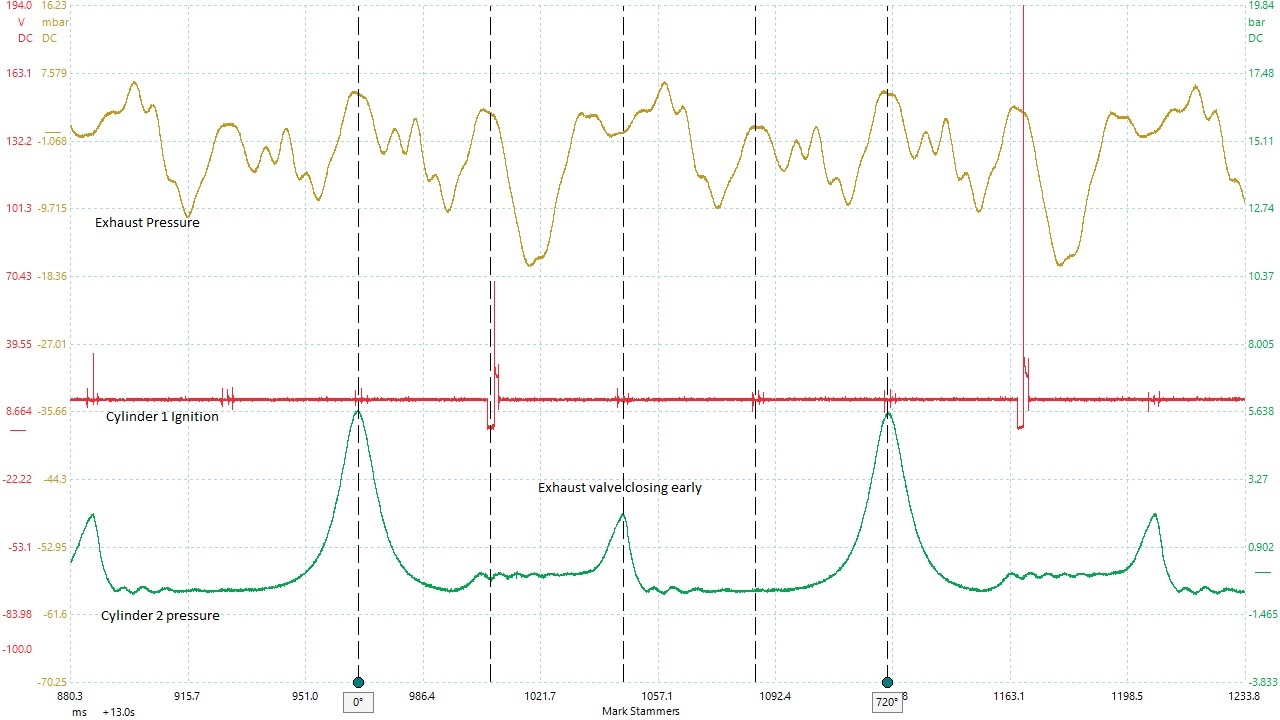
The following wave forms are taken from a 4 cylinder petrol engine and show the cylinder pressure through the 4 stroke cycle.
The pressure signal was sampled using a Pico WPS500 pressure transducer.
The first image is of the PSA TU3 engine, with no faults and so represents a good reference.
The engine was disabled and so only shows the signal under cranking condition, with the throttle closed.
Note the symmetry in the MAP sensor signal.
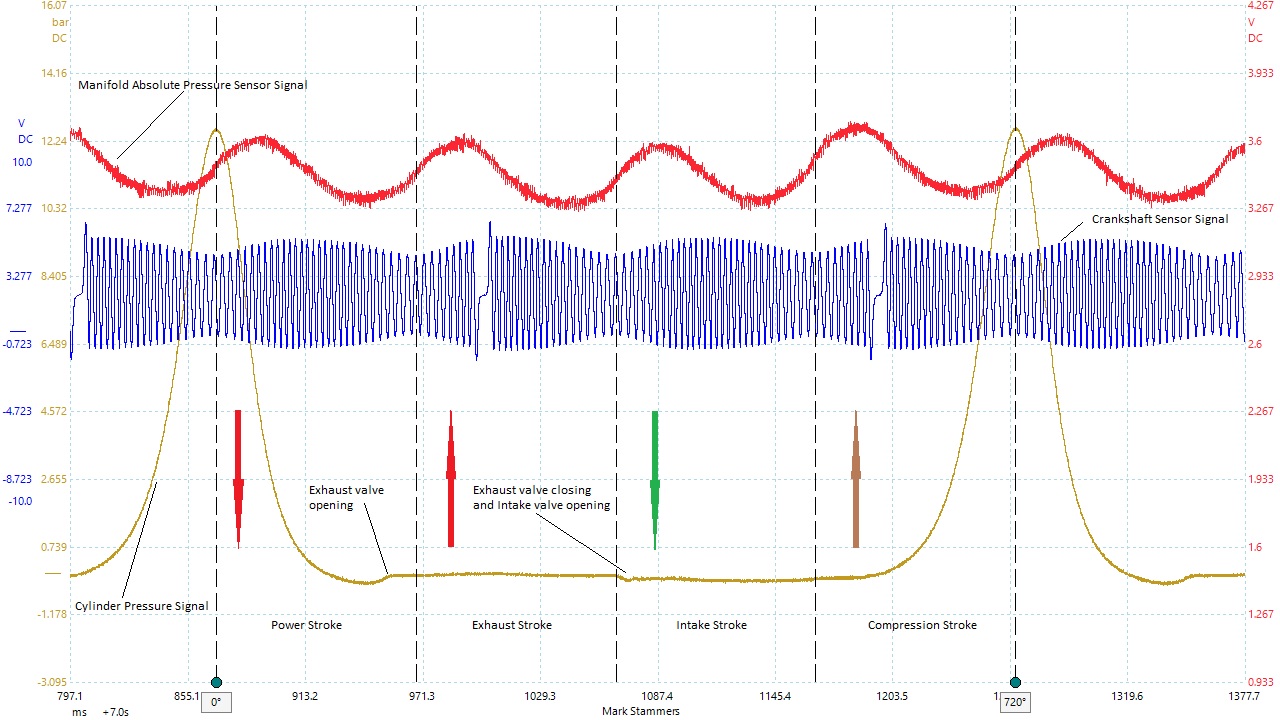
This image shows the same engine type as above, but the valve timing is out by 4 teeth.
This is noticeable by the exhaust valve opening position.
The vehicle symptom was very poor performance and bad starting.
Notice the slant in the MAP sensor signal, compared to the first image.
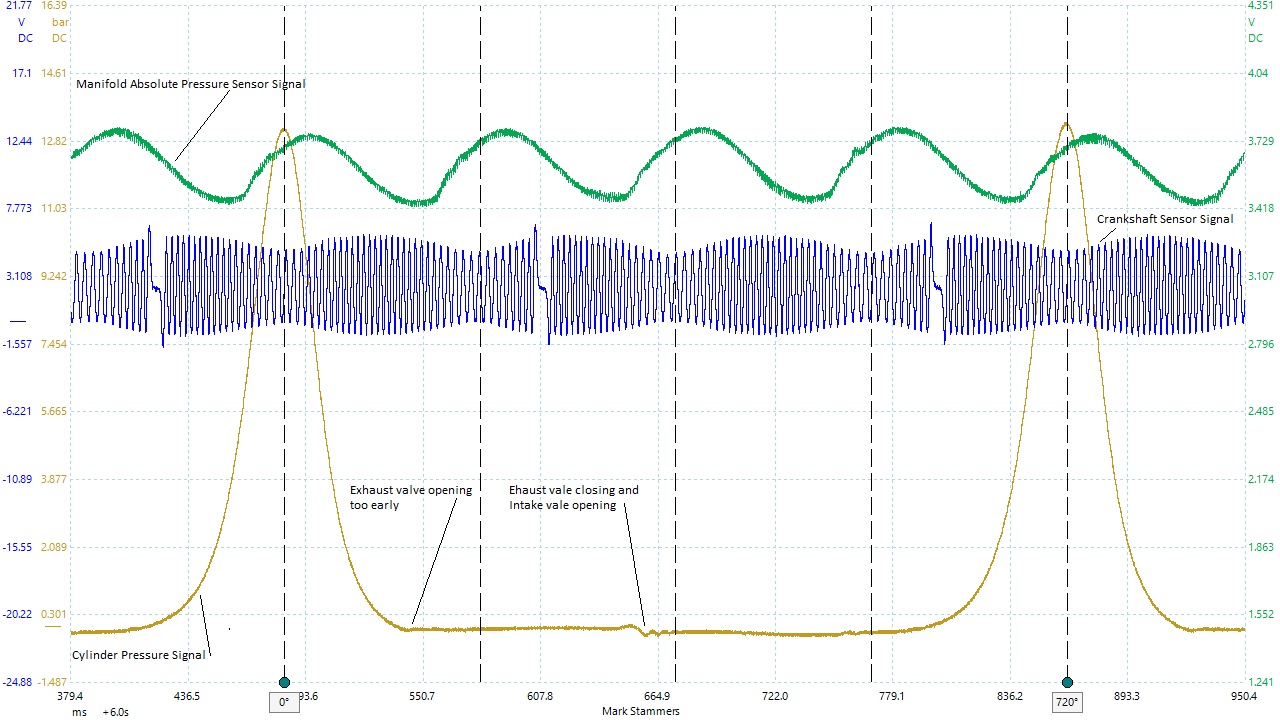
The wave forms below are taken from a 206 Gti EW10 engine, which was suffering lumpy idle/misfire from cold. They represent a cold crank, comparitive compression test. The red wave form shows the engine as original and the blue wave form shows the engine after the hydraulic tappets were replaced. Note; there is some difference in the amperage, this is due to ambient air temperature only.
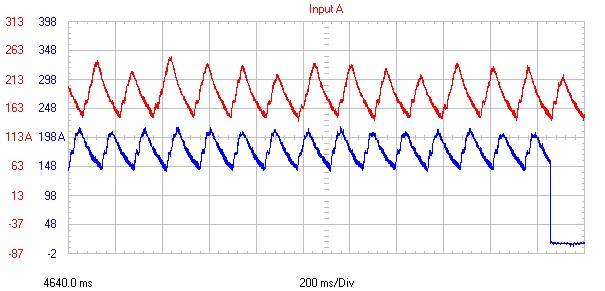
The wave form below is taken from a 307 TU5JP4, which was suffering a cylinder misfire. The diagnostics revealed P1336 / P1338, which relate to cylinder No.2. As you can see there is no compression visible on the cylinder, as recorded by current draw, and backed up by conventional testing. All other cylinders produced approximately 14 bars.
This fault was caused by one of the exhaust valves being burnt out.
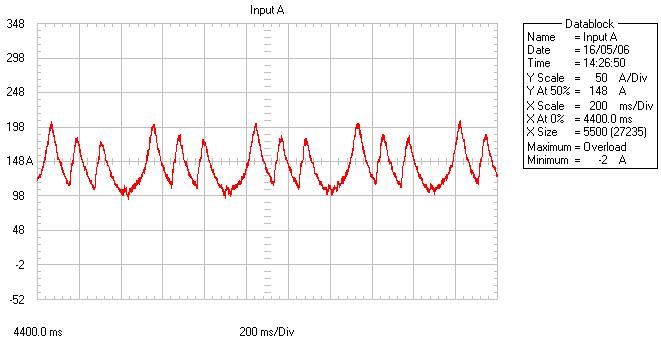
Comparative Compression test, made with amps clamp on a 307 DW10td. This fault was caused by fuel contamination, which resulted in injector failure and consequently over fueling.
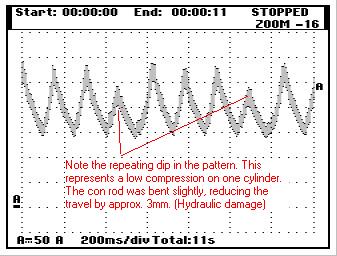
The wave form below shows the cranking current on a TU5jp4 from cold start. This is typical of the valves sticking.
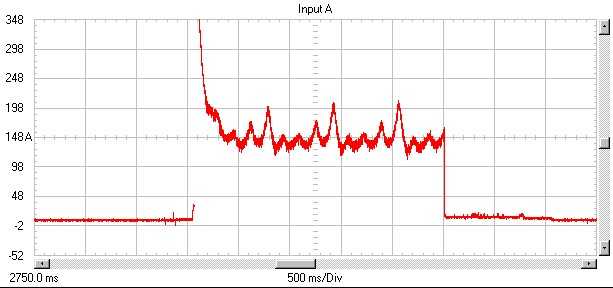
The wave form below is a section of the a full wave showing the cranking current from a DV4td engine at approximately 13°C. The compressions measured 18.5 bar and as can been seen are uniform throughout all cylinders.
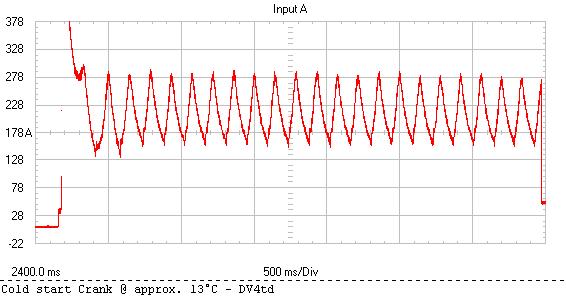
Last Reviewed: 16 April 2021Copyright © 2004...2021 Mark Stammers